Road Trip to Washington - Day 3
/We certainly could have spent more time at Mt. St. Helens NVM (Day 2) or gone to see Mt. Rainier, or any number of other interesting places in Washington, but now we were on to our primary destination, Olympic National Park. We were concurrently following the Olympic Peninsula Waterfall Trail that Dan had read about.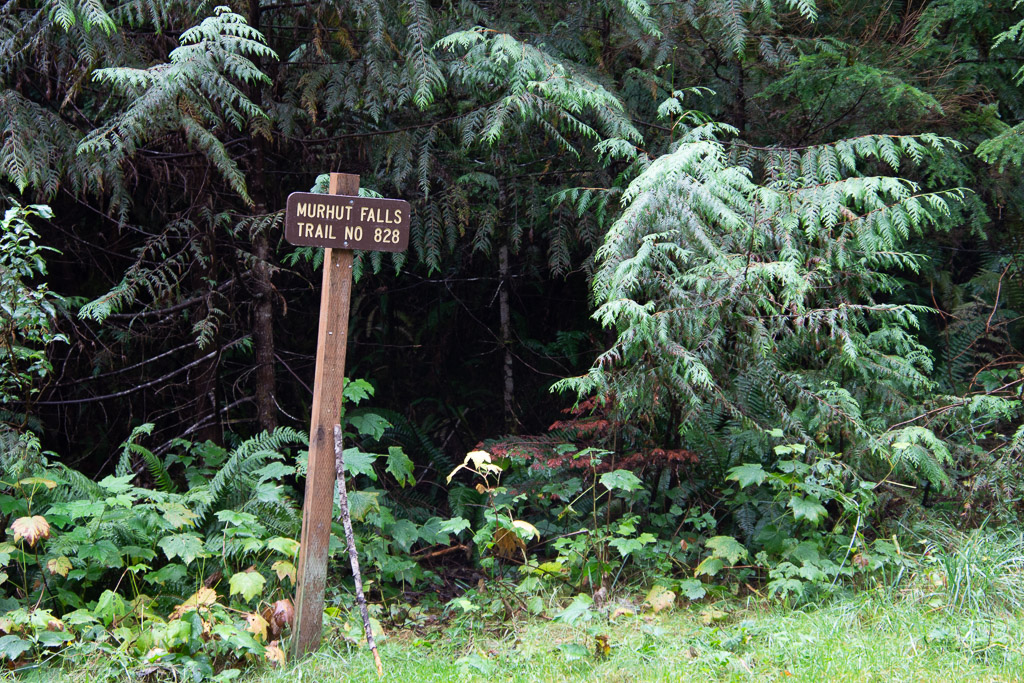 Our first waterfall on the trail, and before getting to the park, was Murhut Falls on the Duckabush River.
Our first waterfall on the trail, and before getting to the park, was Murhut Falls on the Duckabush River.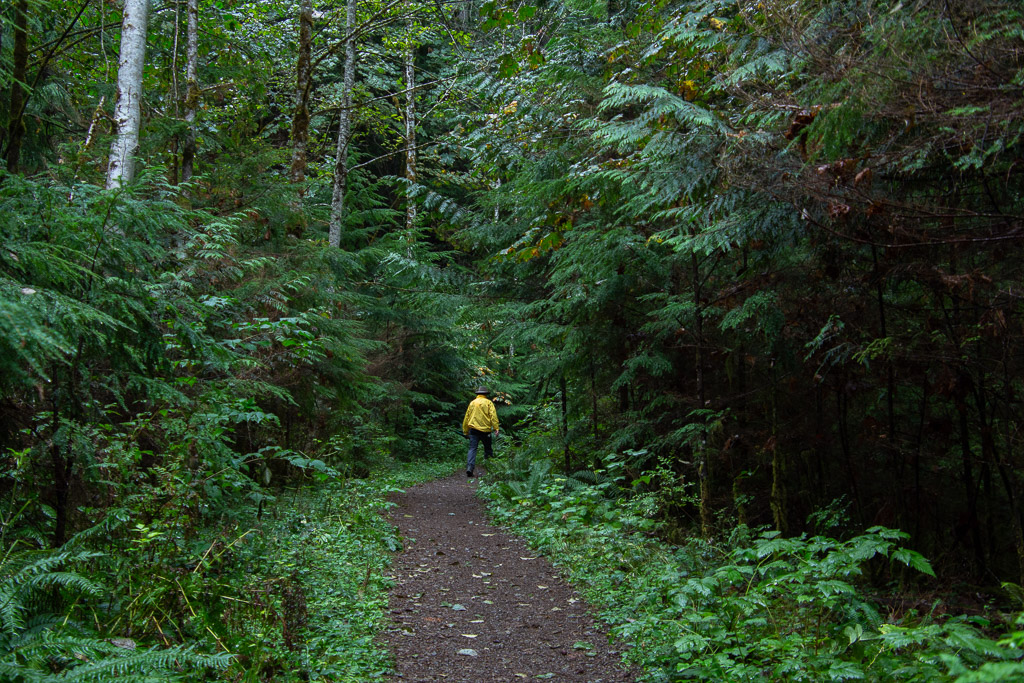 I first wondered about the name of the river. You have to duck under bushes if you don't have a ready made trail? No, in a side trip to Google I found that it is an Indian word meaning red face, referring to reddish bluffs in the area.
I first wondered about the name of the river. You have to duck under bushes if you don't have a ready made trail? No, in a side trip to Google I found that it is an Indian word meaning red face, referring to reddish bluffs in the area. 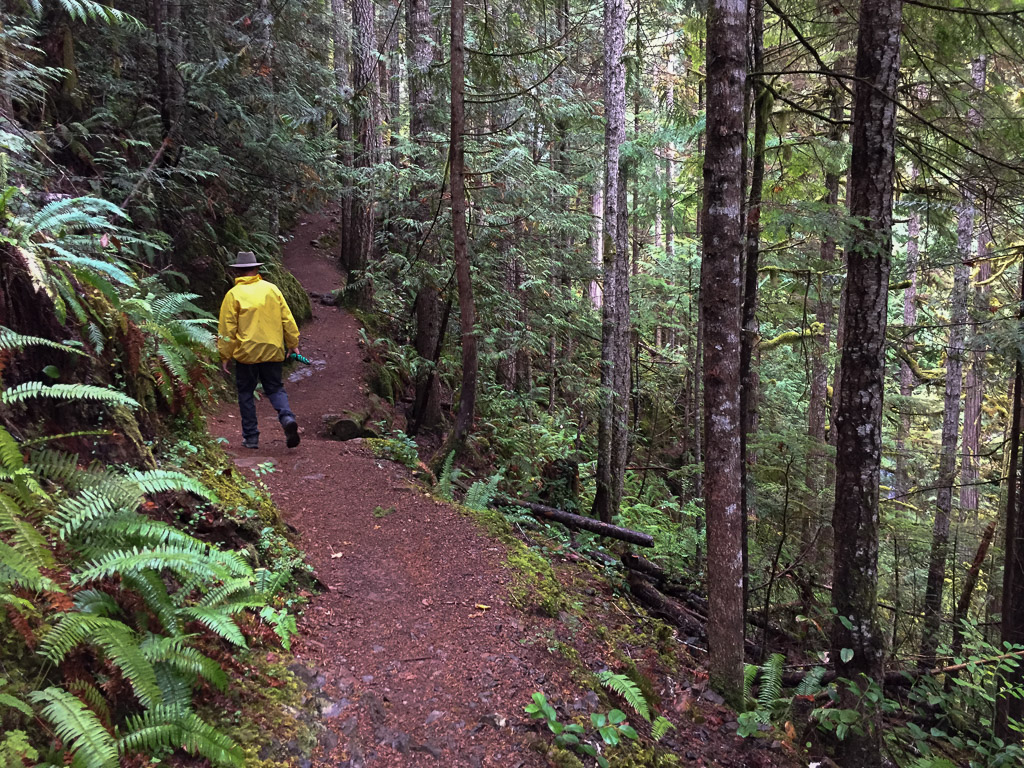 As we found in all our wanderings in this area, the forest is dense, damp, and spectacular.
As we found in all our wanderings in this area, the forest is dense, damp, and spectacular.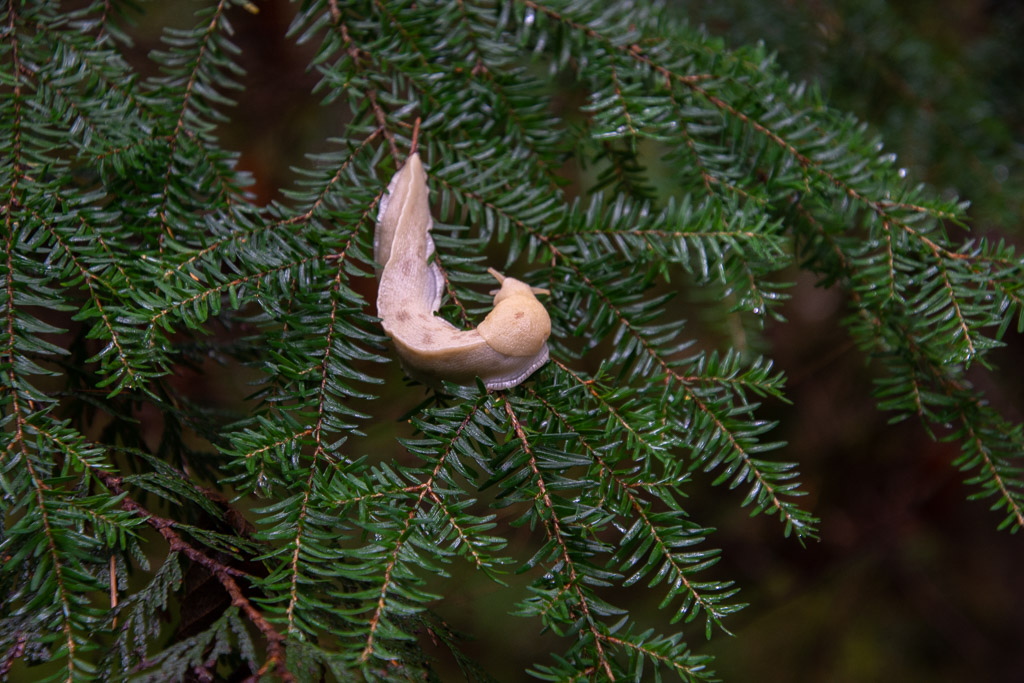 A wildlife shot along the way. So far the only wildlife I was photographing was slow moving.
A wildlife shot along the way. So far the only wildlife I was photographing was slow moving.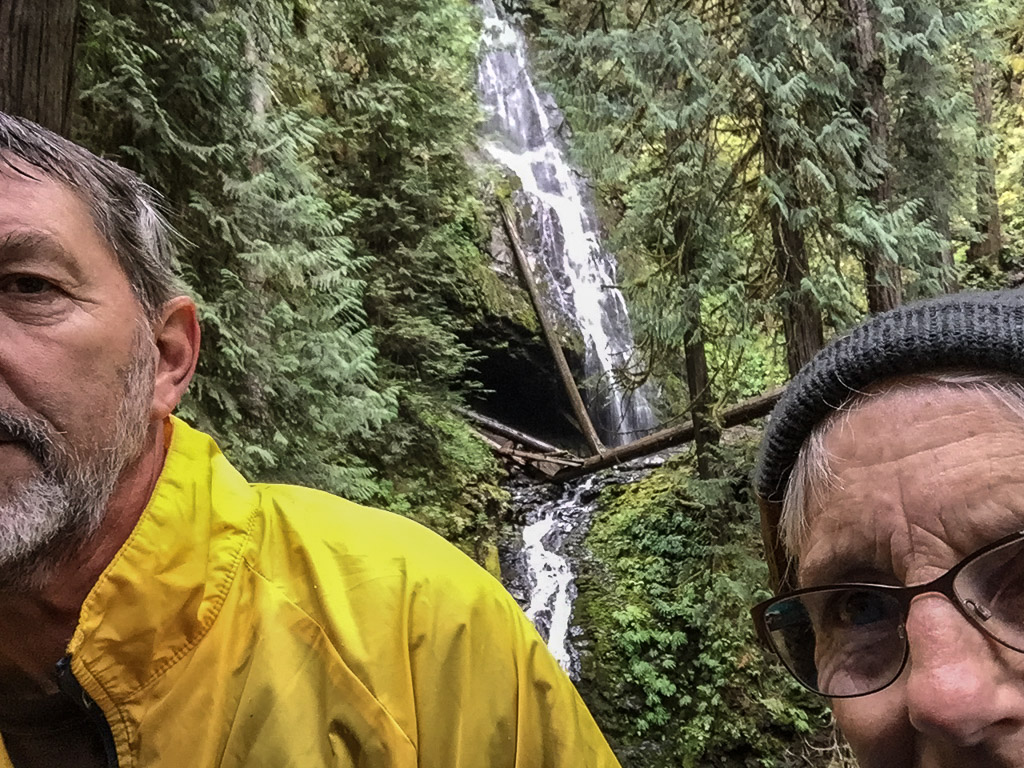 About 3/4 mile up the trail we found the falls.
About 3/4 mile up the trail we found the falls.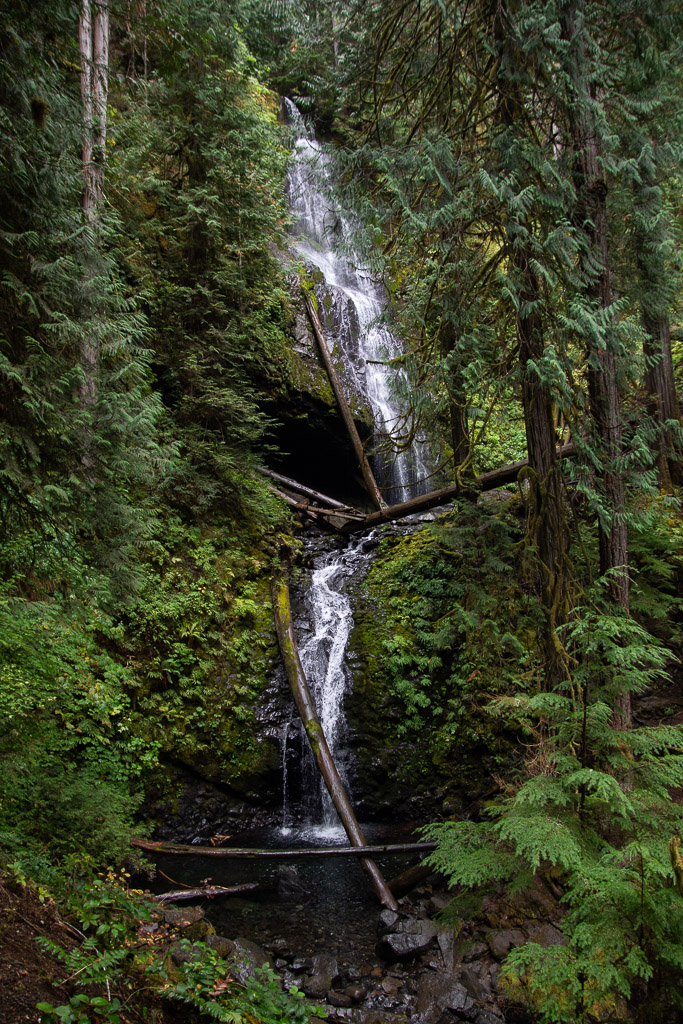 The waterfall trail guide says that this one is 120 feet with another 35 feet below this point. Photos don't do any of the forest scenery justice.
The waterfall trail guide says that this one is 120 feet with another 35 feet below this point. Photos don't do any of the forest scenery justice.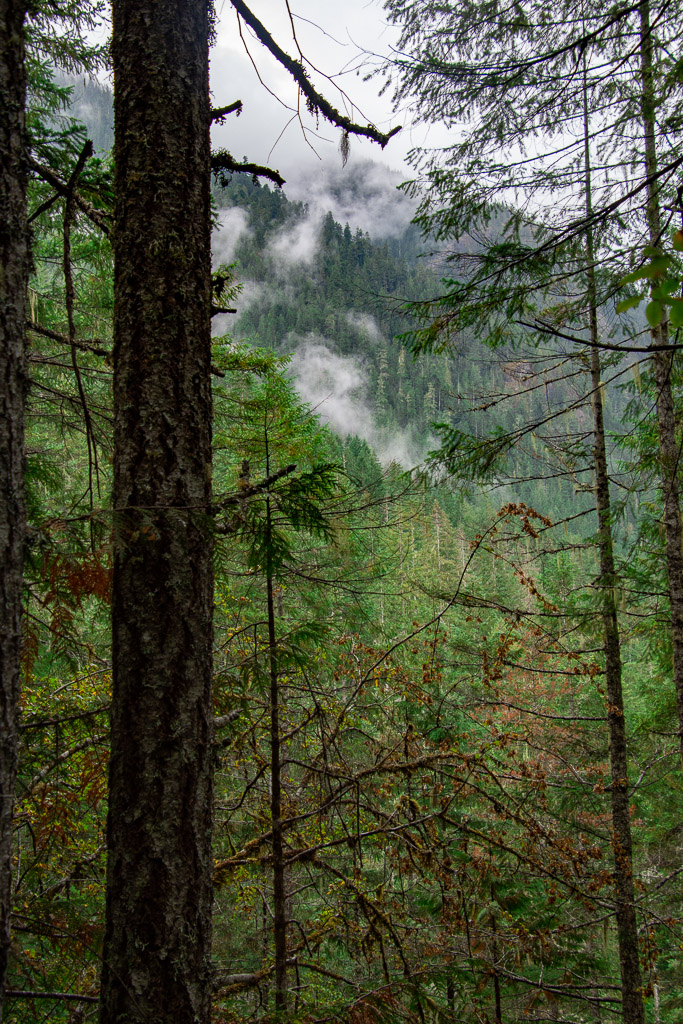 Weather continued to be damp and misty but not much real rain.
Weather continued to be damp and misty but not much real rain.
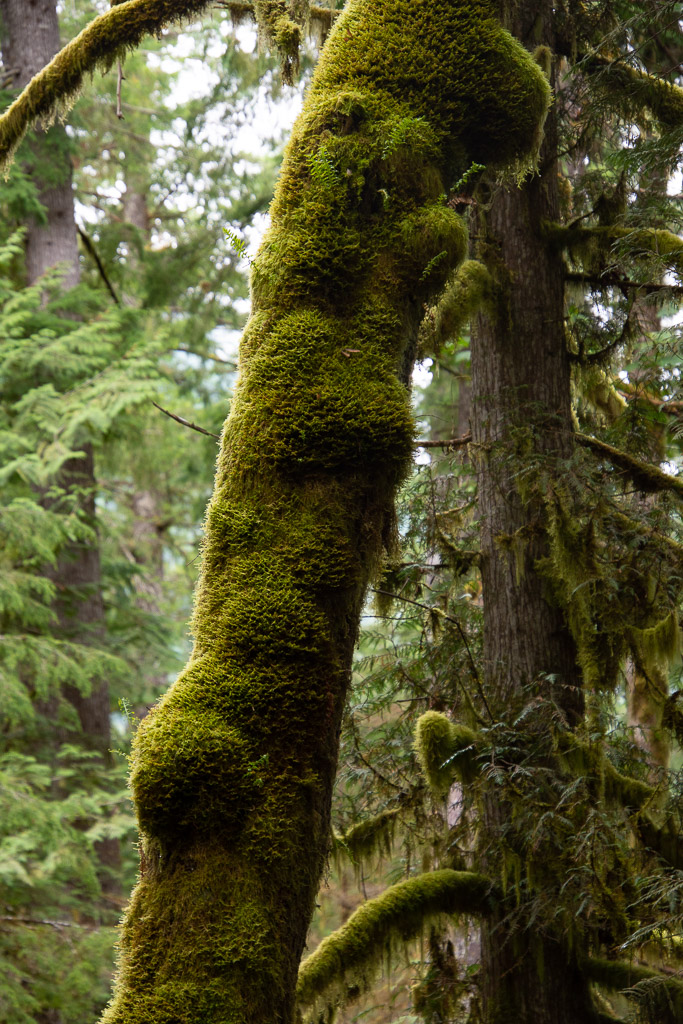 You can certainly tell that this is a wet climate as opposed to most of the places we find ourselves hiking and camping.
You can certainly tell that this is a wet climate as opposed to most of the places we find ourselves hiking and camping.
We continued north with the Hood Canal on our right and heading towards the Strait of Juan de Fuca, the body of water that separates the U.S. from Canada. I had thought that we'd have time to visit some of the nearby islands, but that will also have to be another trip.
We stopped at the Visitor Center in Port Angeles to pick up a map, but didn't spend much time there because we were anxious to get to the Park and figure out where we were going to spend the night. We found that the Heart O' the Hills Campground had spaces so we parked in one and then went hiking.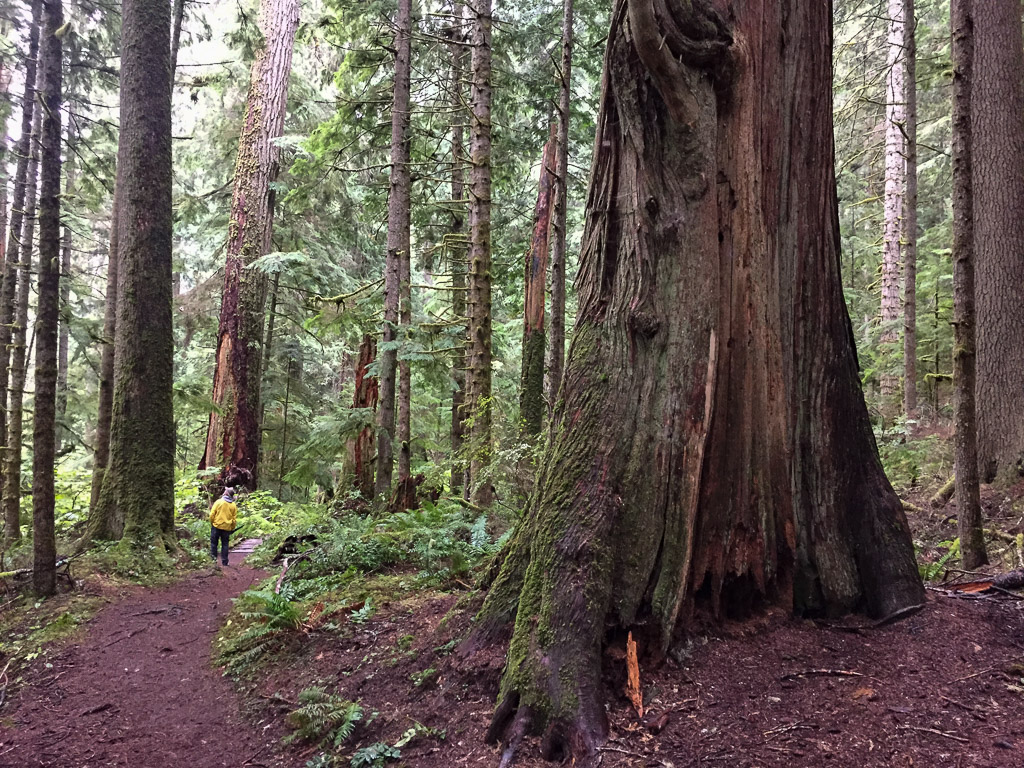 The forest was stunning. The trees were massive.
The forest was stunning. The trees were massive.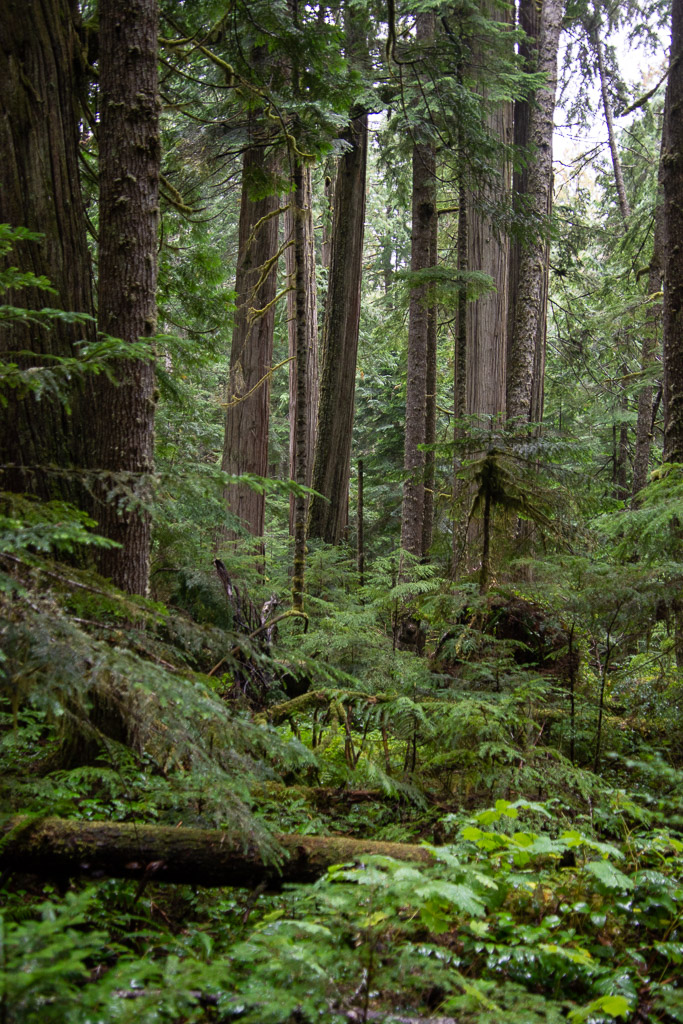 Vegetation is dense.
Vegetation is dense.
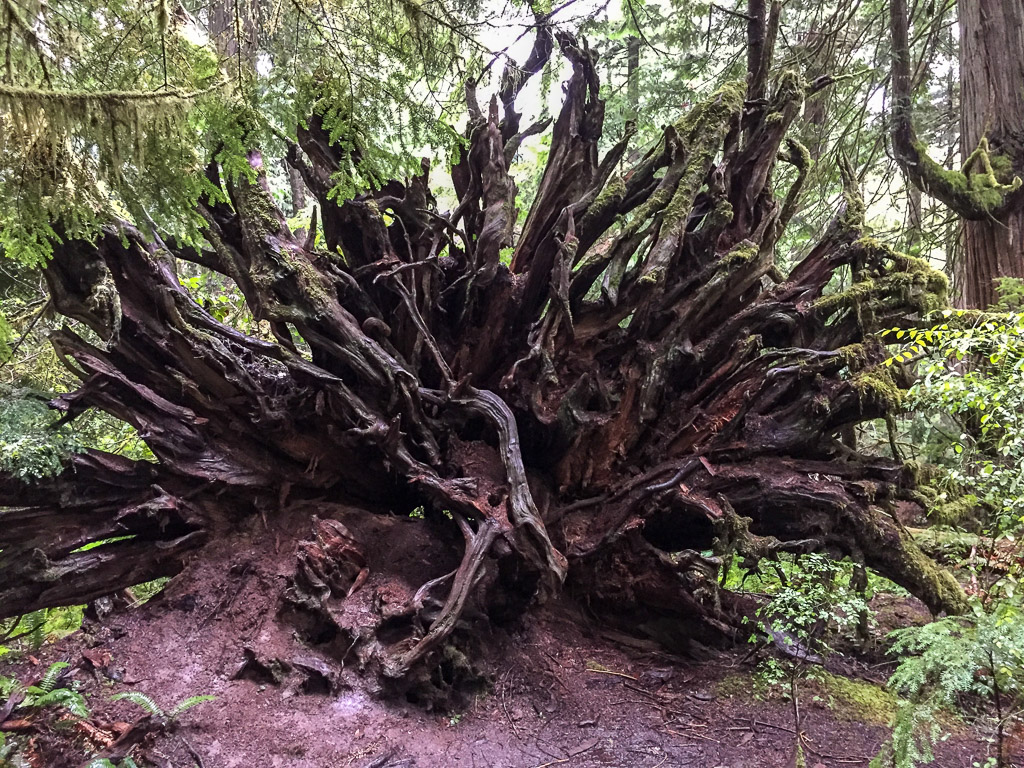 There were lots of trees down throughout this part of the forest, but it doesn't take long before ferns and herbaceous plants are growing on the downed trees and the forest covers them over.
There were lots of trees down throughout this part of the forest, but it doesn't take long before ferns and herbaceous plants are growing on the downed trees and the forest covers them over.

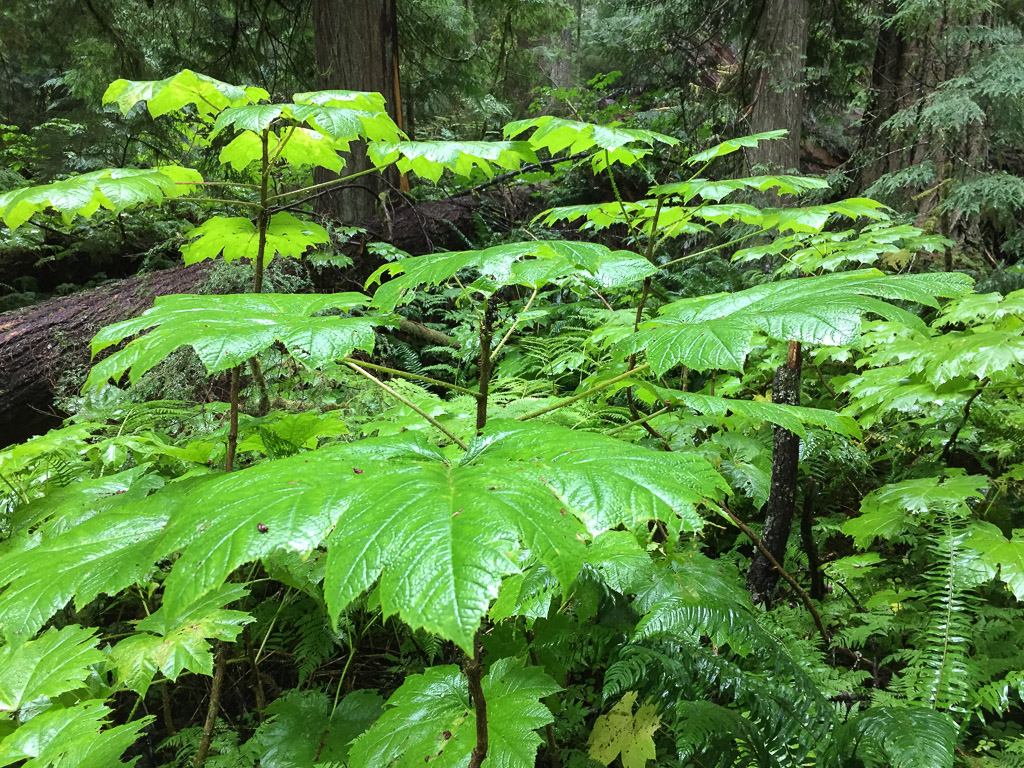 This plant with huge (up to 15") leaves was everywhere in the understory (see the three photos above). It is called Devils Club (Oplopanax horridus) and is endemic to dense, moist, old-growth forests of the Pacific Northwest. It has a long list of uses by Native Americans from medicinals to face paint and is covered with irritating spines.
This plant with huge (up to 15") leaves was everywhere in the understory (see the three photos above). It is called Devils Club (Oplopanax horridus) and is endemic to dense, moist, old-growth forests of the Pacific Northwest. It has a long list of uses by Native Americans from medicinals to face paint and is covered with irritating spines. Dwarf Dogwood, Cornus candensis.
Dwarf Dogwood, Cornus candensis.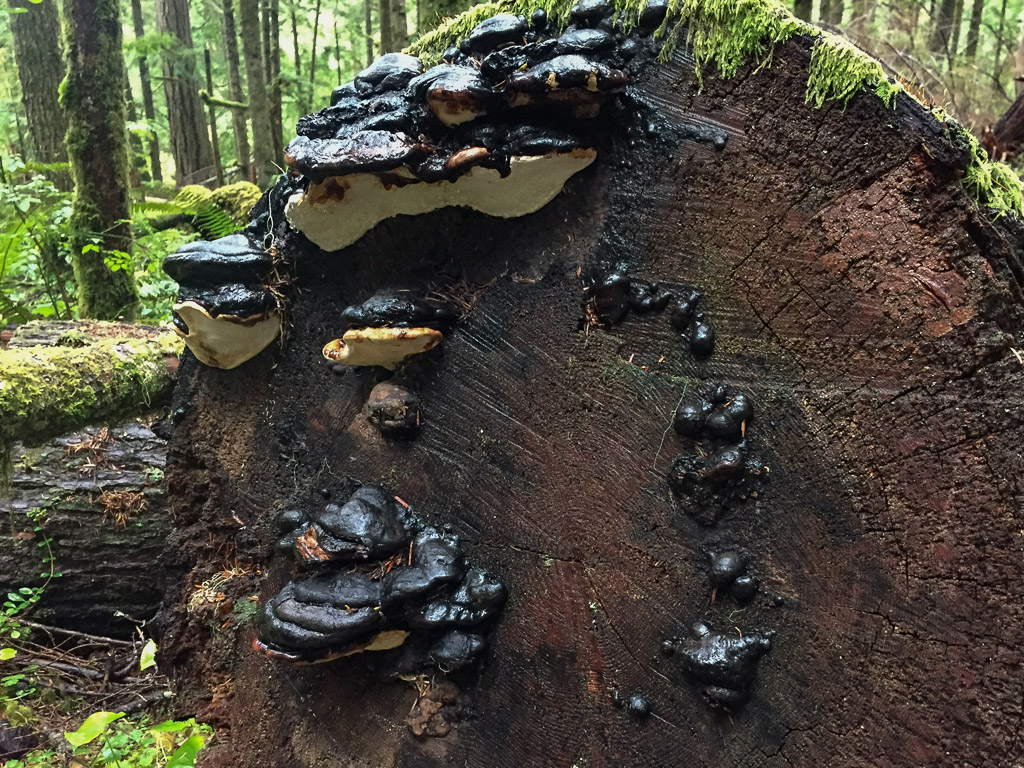 I didn't even try to identify fungi, but took photos because I like to share these with a friend who dyes with mushrooms.
I didn't even try to identify fungi, but took photos because I like to share these with a friend who dyes with mushrooms.


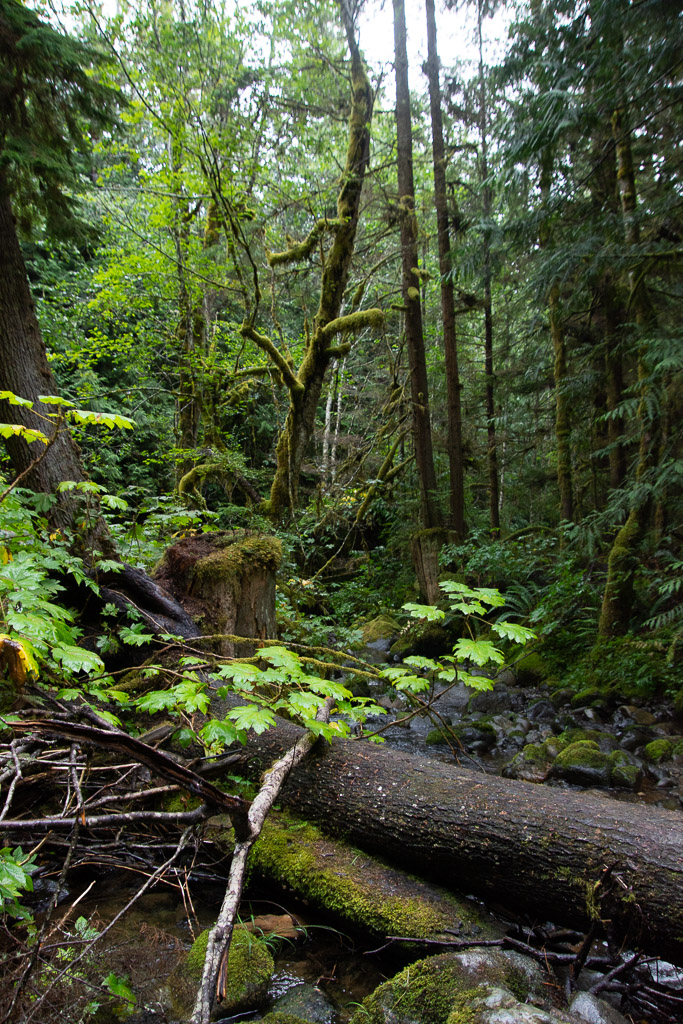 We walked until we reached the creek and were undecided how far the trail continued. But it was getting to be dusk and we decided that we'd better turn back.
We walked until we reached the creek and were undecided how far the trail continued. But it was getting to be dusk and we decided that we'd better turn back.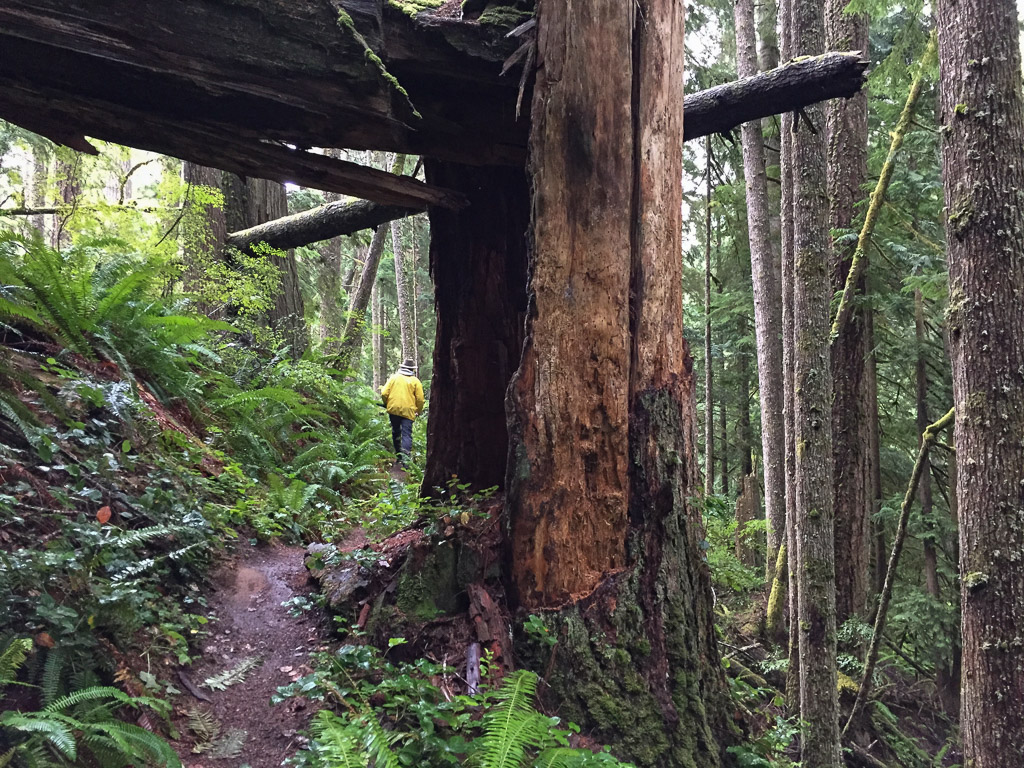 This forest would be pretty dark when the sun was down.
This forest would be pretty dark when the sun was down.
I've lost track of our camping meals because they are not exactly gourmet food. On this trip much of the time it was dark by the time we got the camp-stove out and we just dumped a couple of cans of chili in a pan and put hard-boiled eggs and cheese on a salad mix from Safeway. Our sleeping accommodations in the camper shell are just as fancy. We sleep on top of a platform that Dan made so that you can pack all the stuff underneath.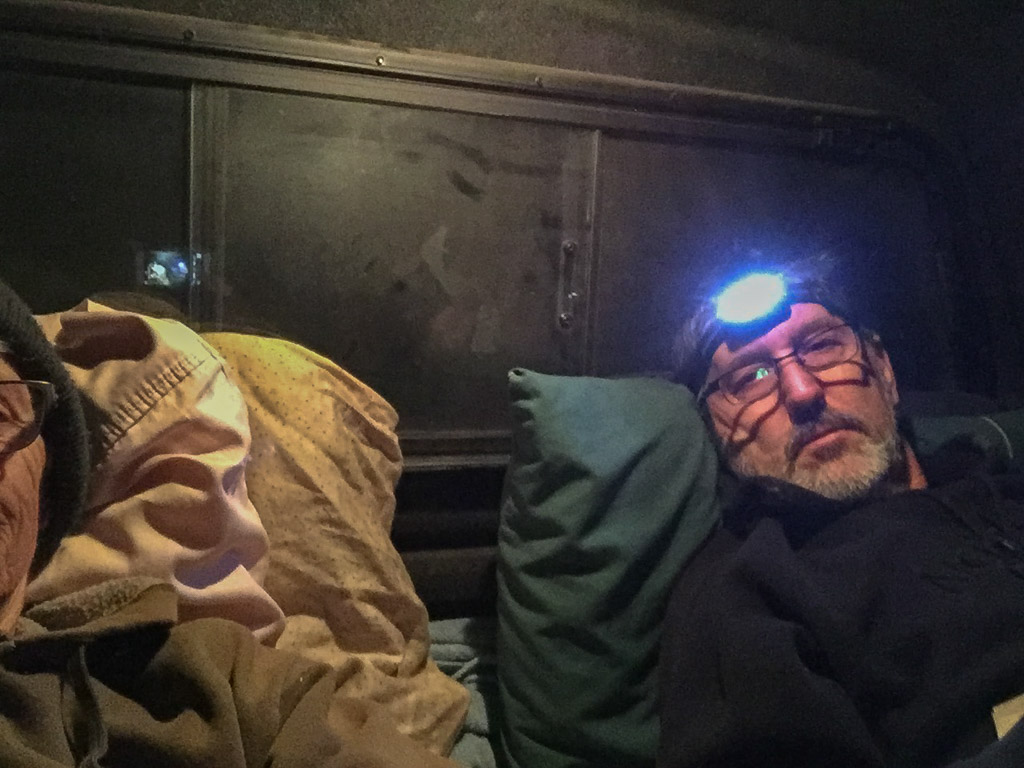 Fortunately it was warm enough with sleeping bag on top of my thick sheepskin. (Maybe it wasn't that warm, seeing that I'm wearing my wool beanie and a sweatshirt.)
Fortunately it was warm enough with sleeping bag on top of my thick sheepskin. (Maybe it wasn't that warm, seeing that I'm wearing my wool beanie and a sweatshirt.) 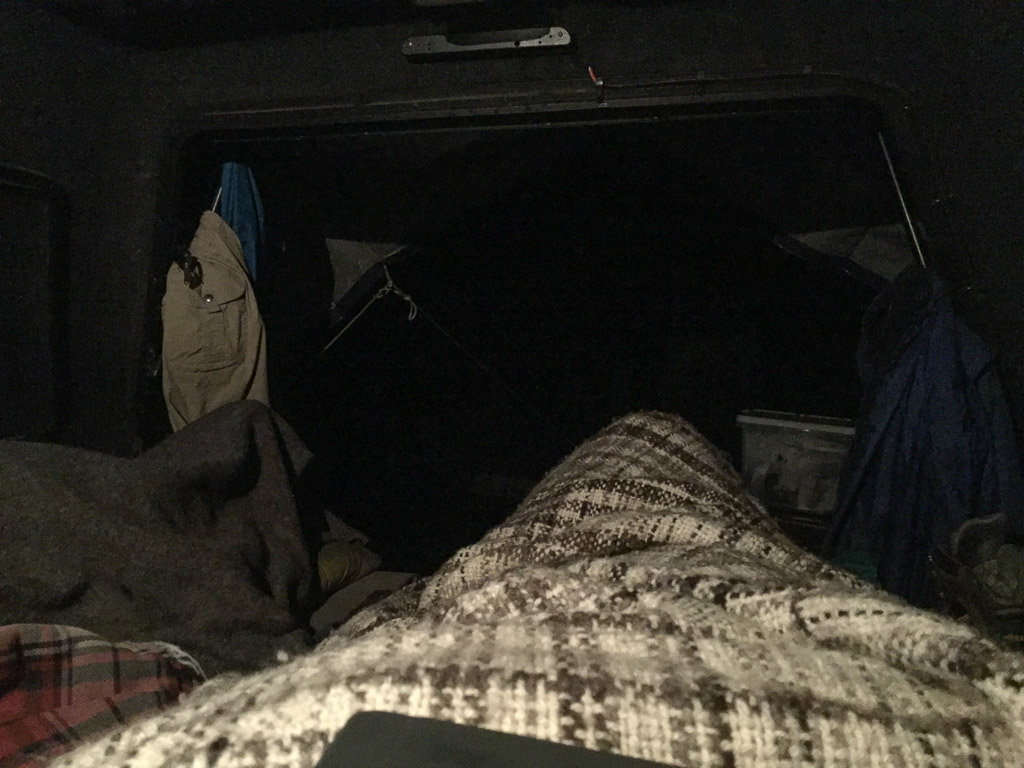 Oh, I have a wool blanket with me too (handspun Jacob by the way). This is the view out from my sleeping bag.
Oh, I have a wool blanket with me too (handspun Jacob by the way). This is the view out from my sleeping bag.
More tomorrow.

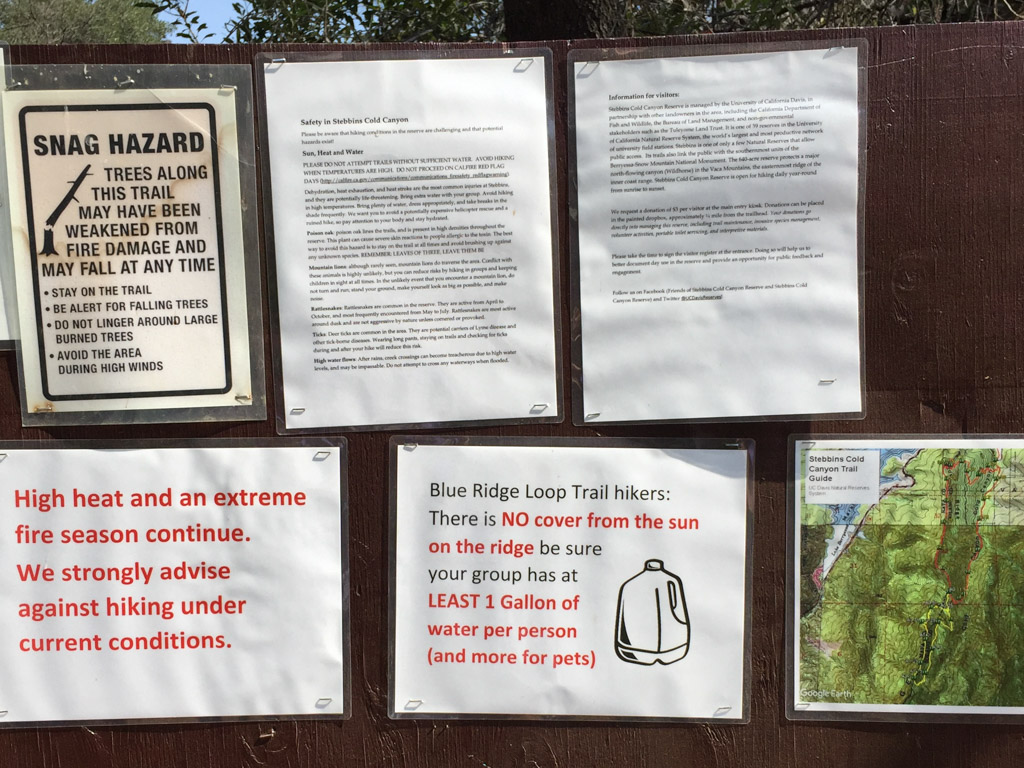 Falling trees, high heat, fires, snakes, poison oak, ticks, mountain lions, high water (that would be a different season). Maybe we should just go back home to the couch.
Falling trees, high heat, fires, snakes, poison oak, ticks, mountain lions, high water (that would be a different season). Maybe we should just go back home to the couch. 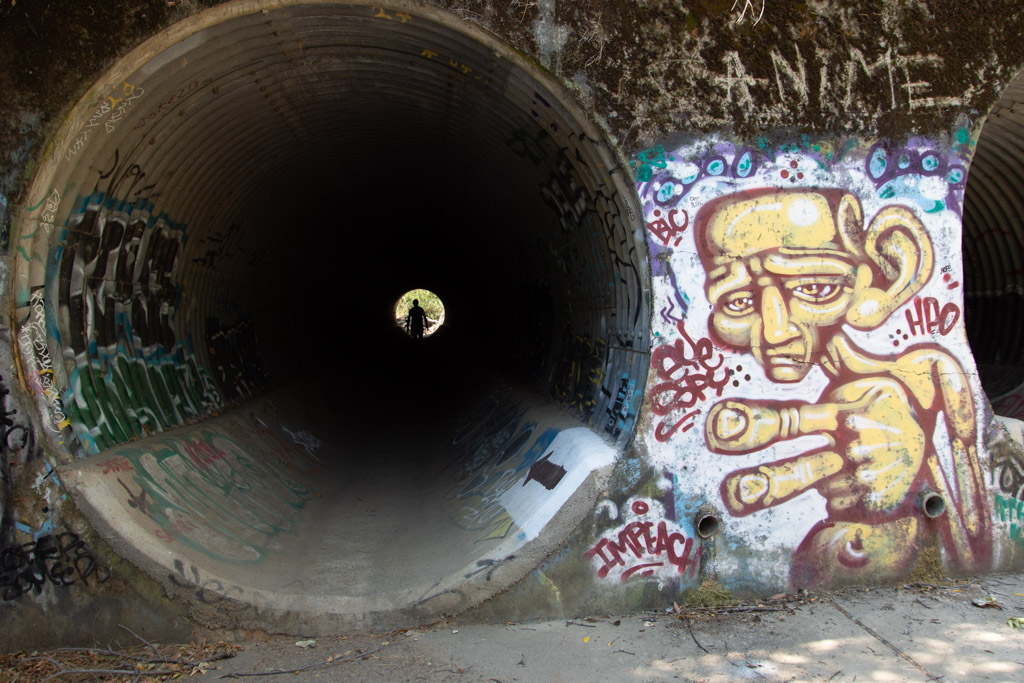 After the 2015 fire the area was rebuilt to accommodate needed parking. Now we park below the Reserve instead of on the side of the road and walk under the road through these huge culverts. This is also where storm water will go in the winter. What's with the graffiti? I am not a fan.
After the 2015 fire the area was rebuilt to accommodate needed parking. Now we park below the Reserve instead of on the side of the road and walk under the road through these huge culverts. This is also where storm water will go in the winter. What's with the graffiti? I am not a fan.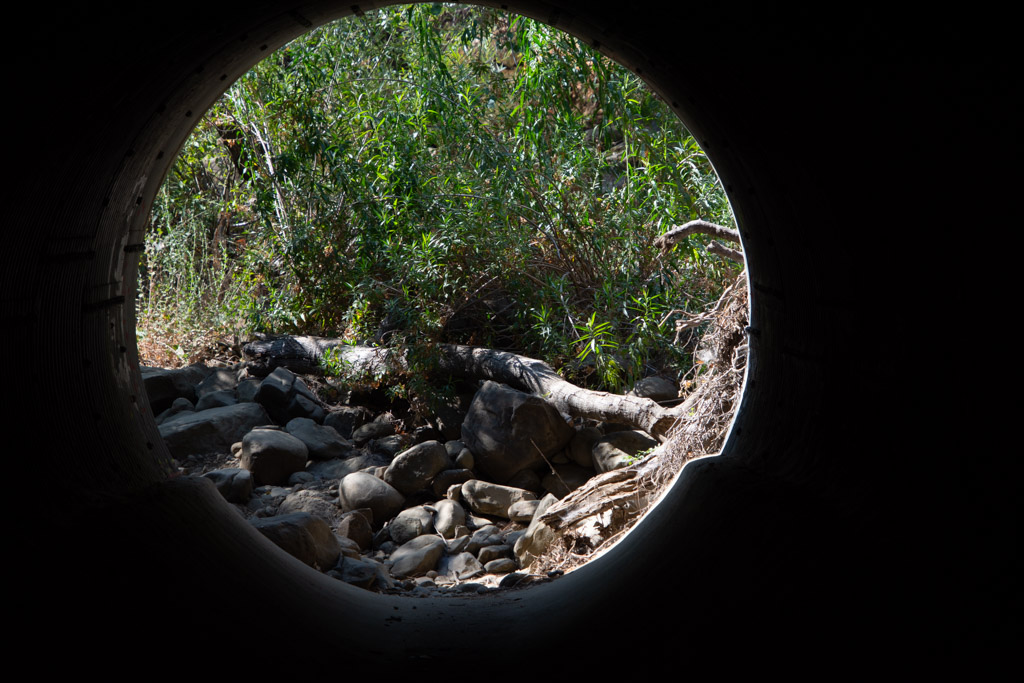 Leaving the culvert.
Leaving the culvert.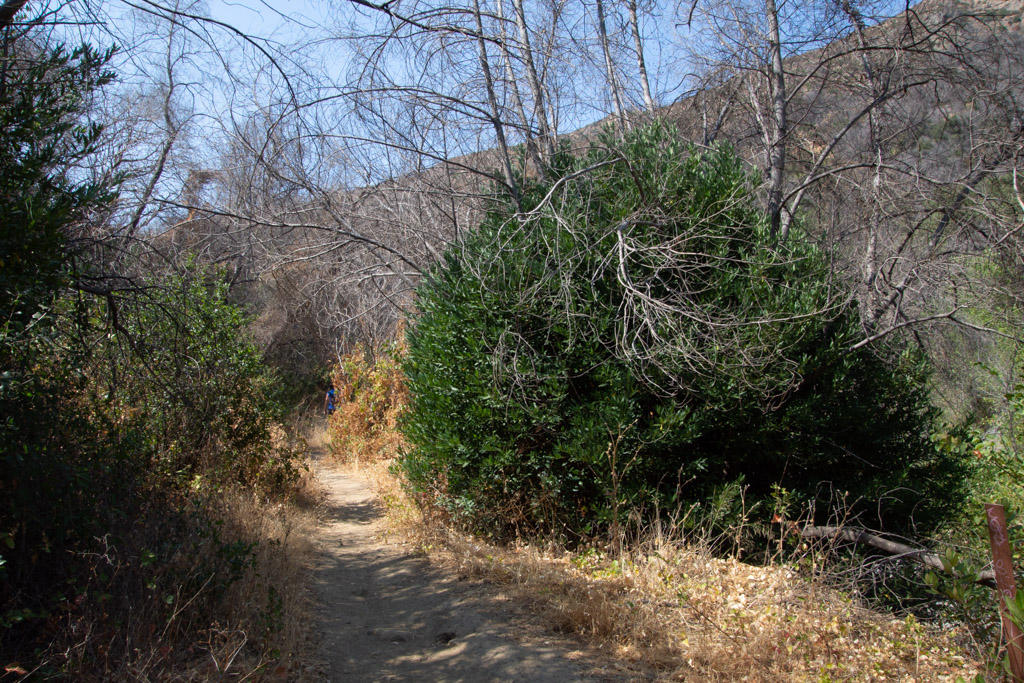 We headed out on the Blue Ridge trail, a five mile round trip. This is three years after the fire. That bush on the right is a CA Bay Laurel growing from the base of the burned tree (it can take on the form of a bush or tree).
We headed out on the Blue Ridge trail, a five mile round trip. This is three years after the fire. That bush on the right is a CA Bay Laurel growing from the base of the burned tree (it can take on the form of a bush or tree).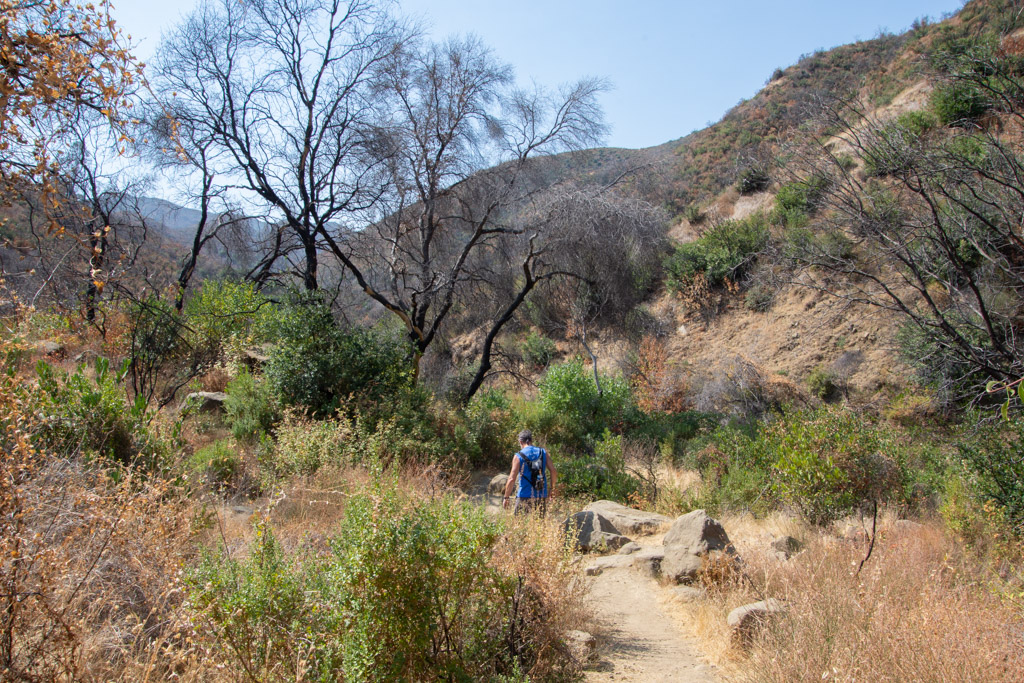
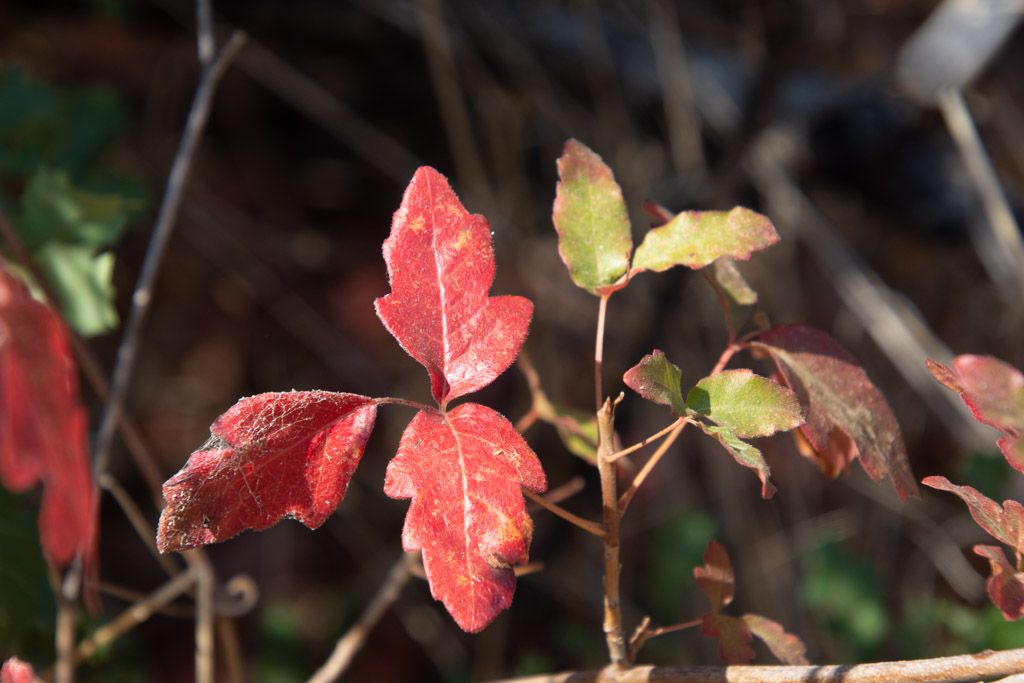 Our first hazard, poison oak.
Our first hazard, poison oak.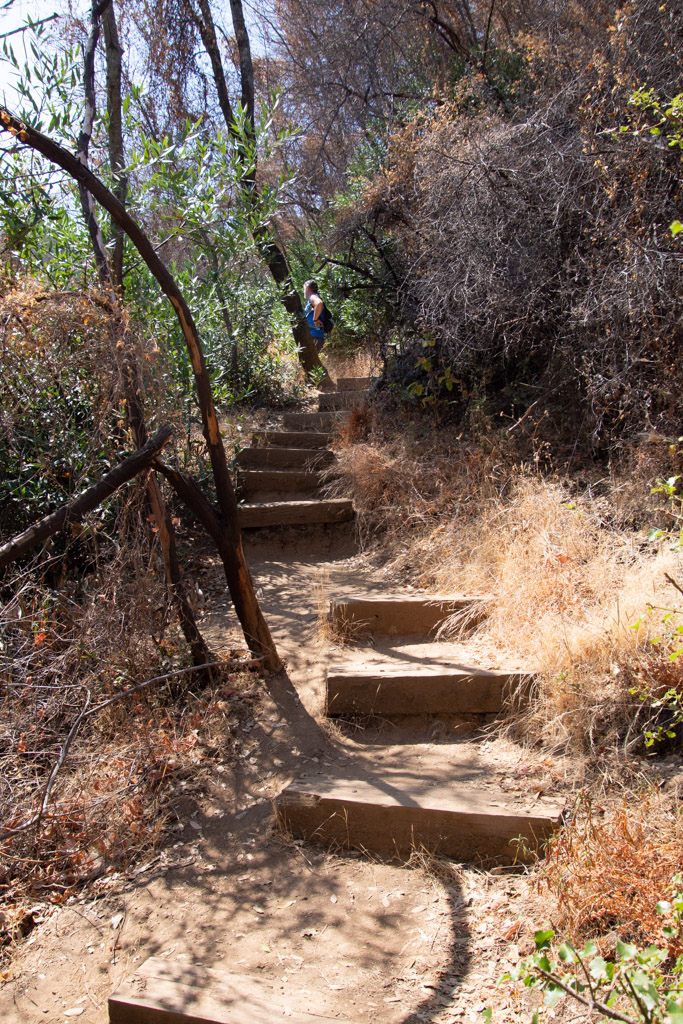 Maybe the next time I go hiking here I'll count the steps. The trail starts in the canyon and eventually you have to get to the top of the ridge. There may be a million stairs--at least it seems that way when you are half way up.
Maybe the next time I go hiking here I'll count the steps. The trail starts in the canyon and eventually you have to get to the top of the ridge. There may be a million stairs--at least it seems that way when you are half way up.  Taking scenic photos is a good excuse to stop. This is a panorama looking southeast.
Taking scenic photos is a good excuse to stop. This is a panorama looking southeast. 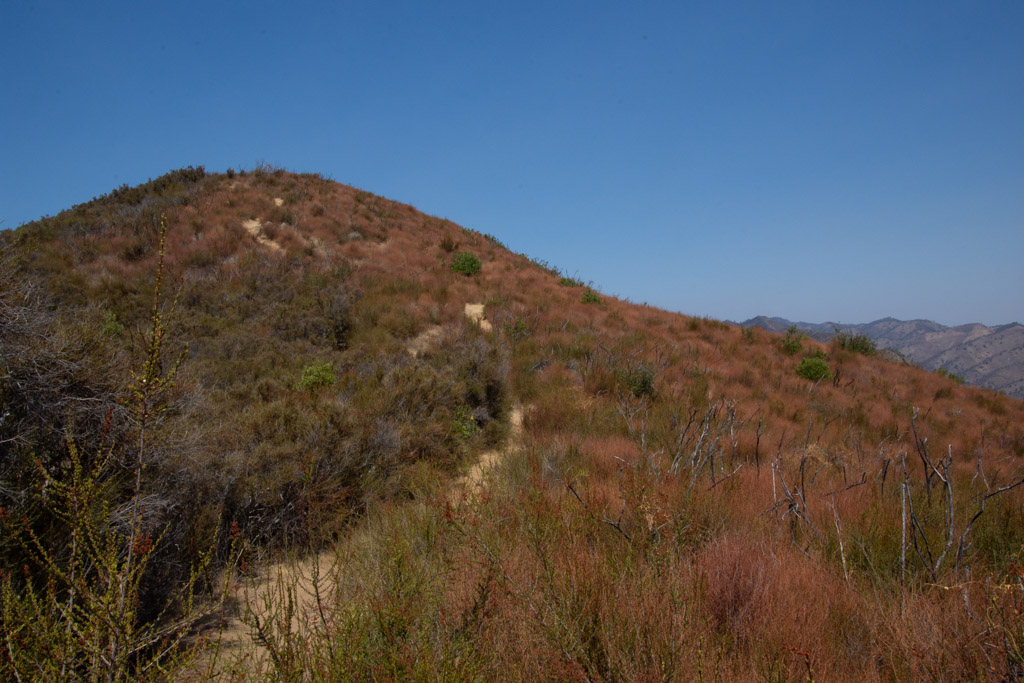 Our trail continued to the ridgeline. This is the bluest sky that I've seen since the fires started in June. We're up above the smoke and haze here.
Our trail continued to the ridgeline. This is the bluest sky that I've seen since the fires started in June. We're up above the smoke and haze here. 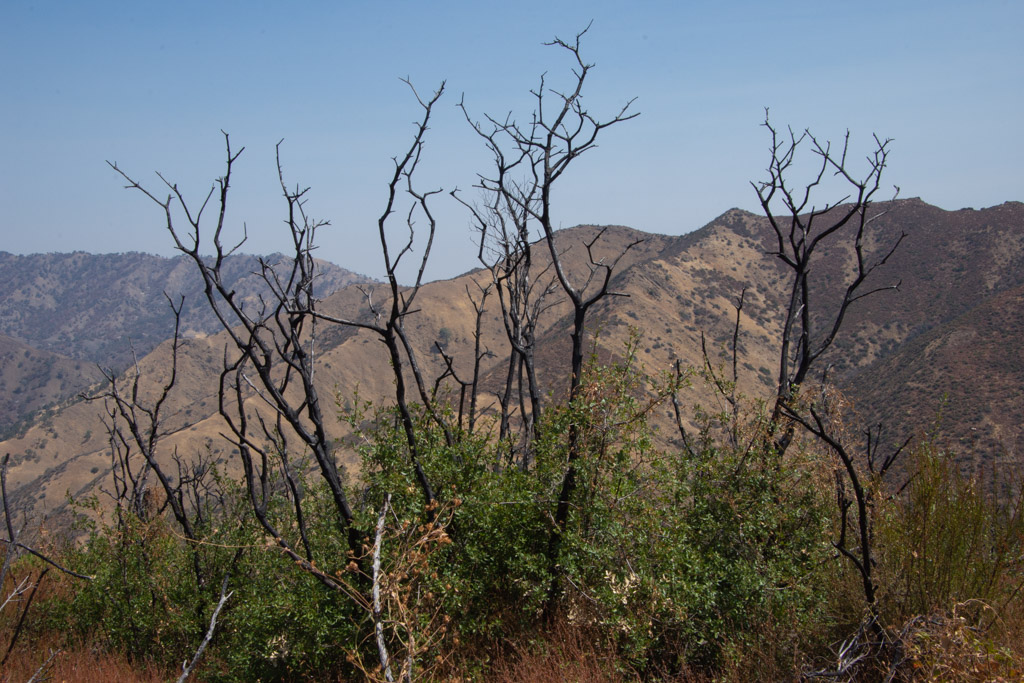
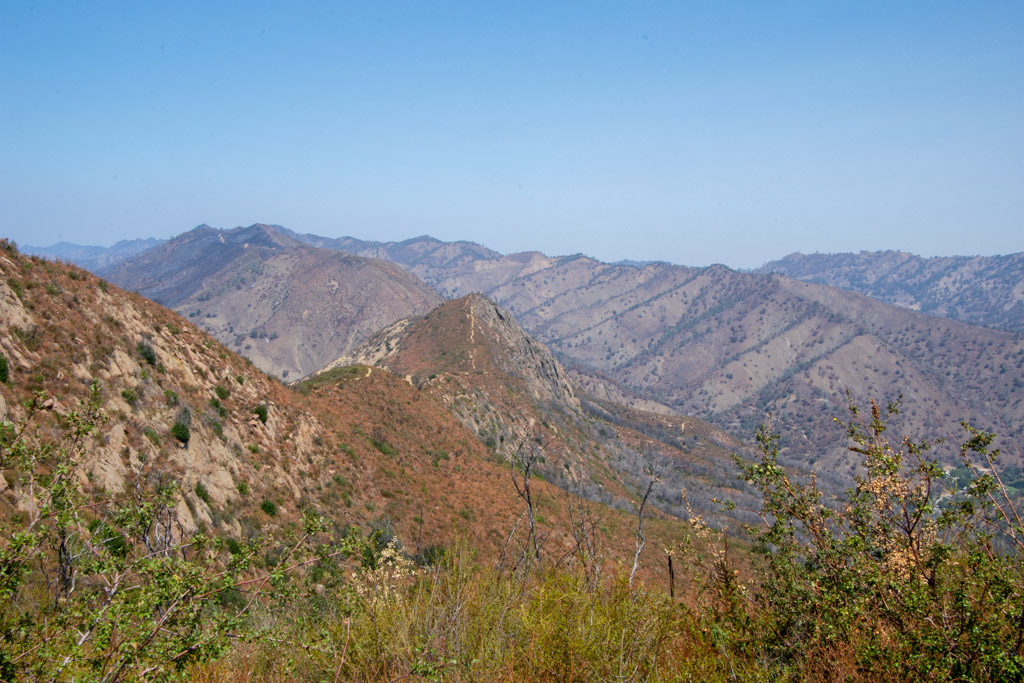 View to the east. That little line on the ridge is our trail.
View to the east. That little line on the ridge is our trail.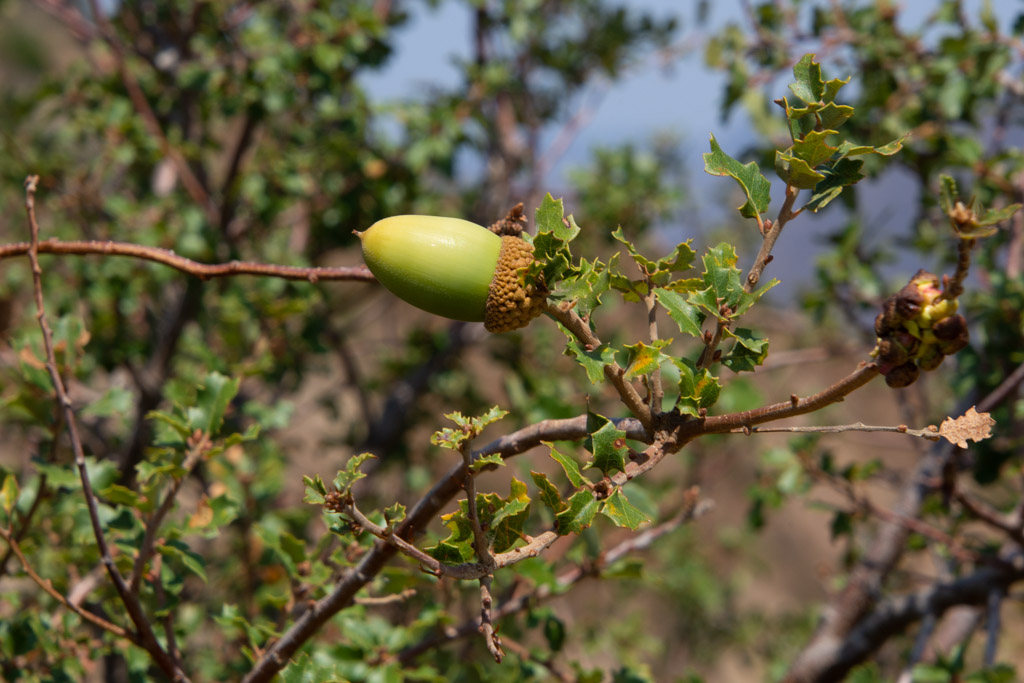
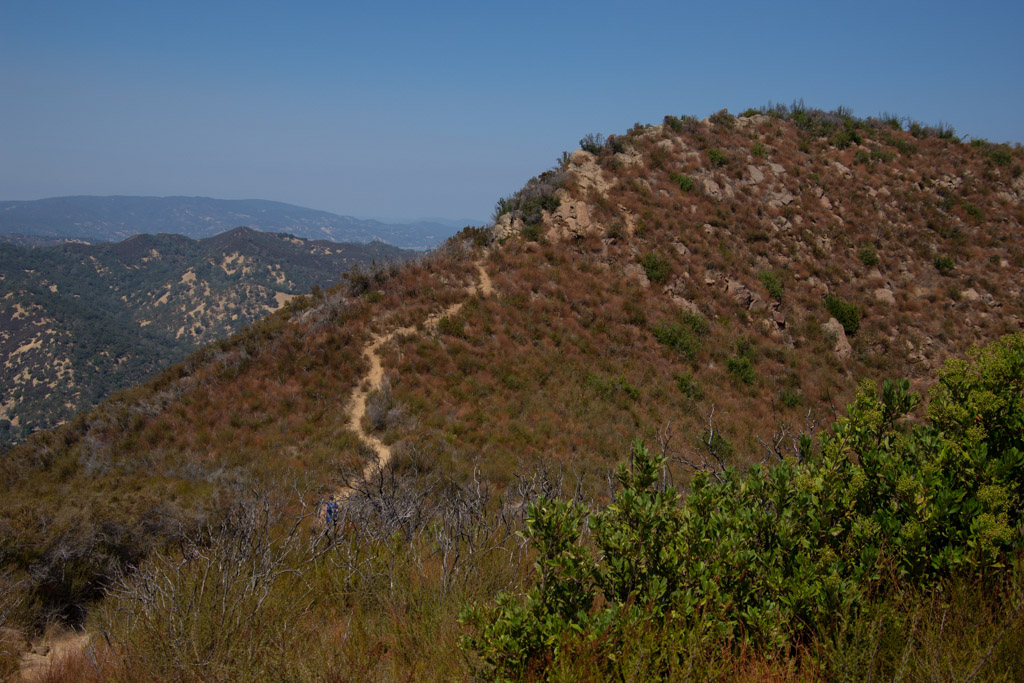
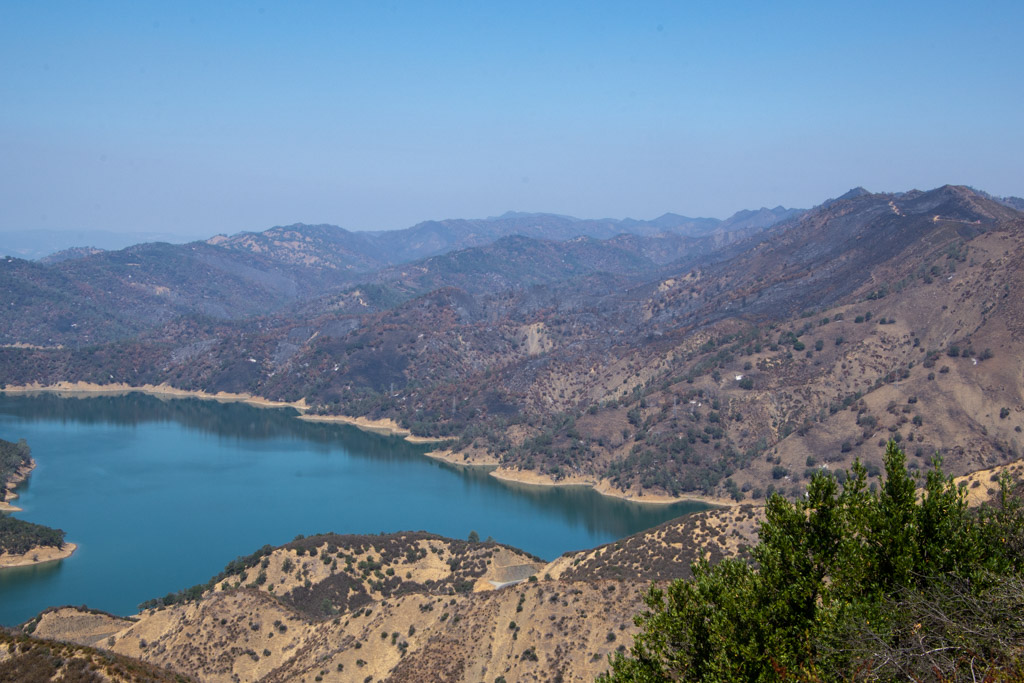 From the top you can look down to Lake Berryessa. Except for the foreground most of the land was burned this summer.
From the top you can look down to Lake Berryessa. Except for the foreground most of the land was burned this summer.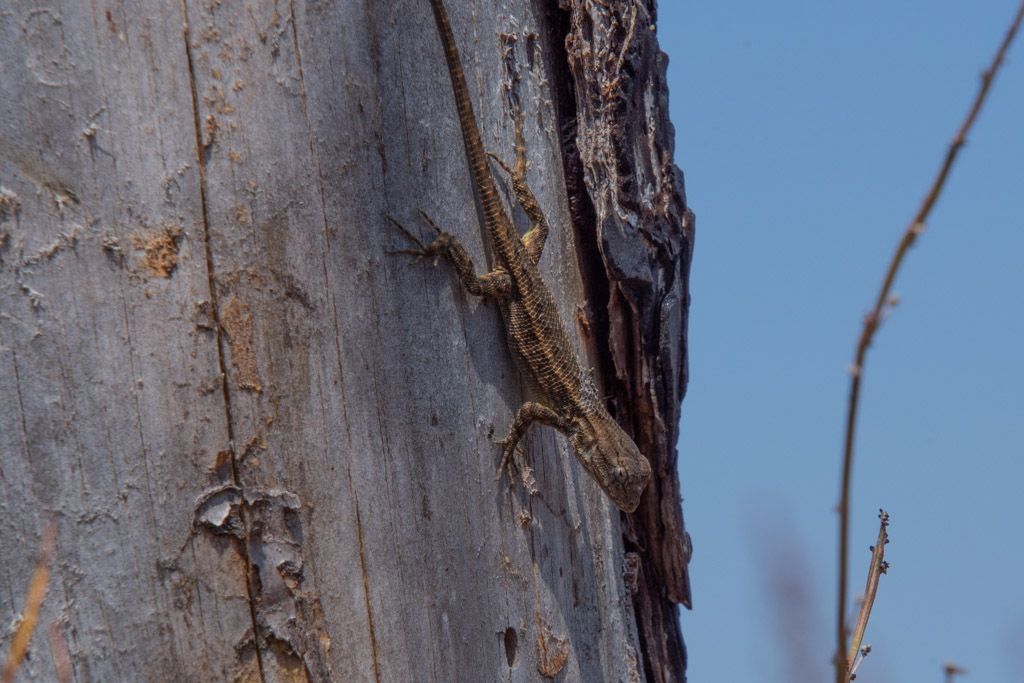
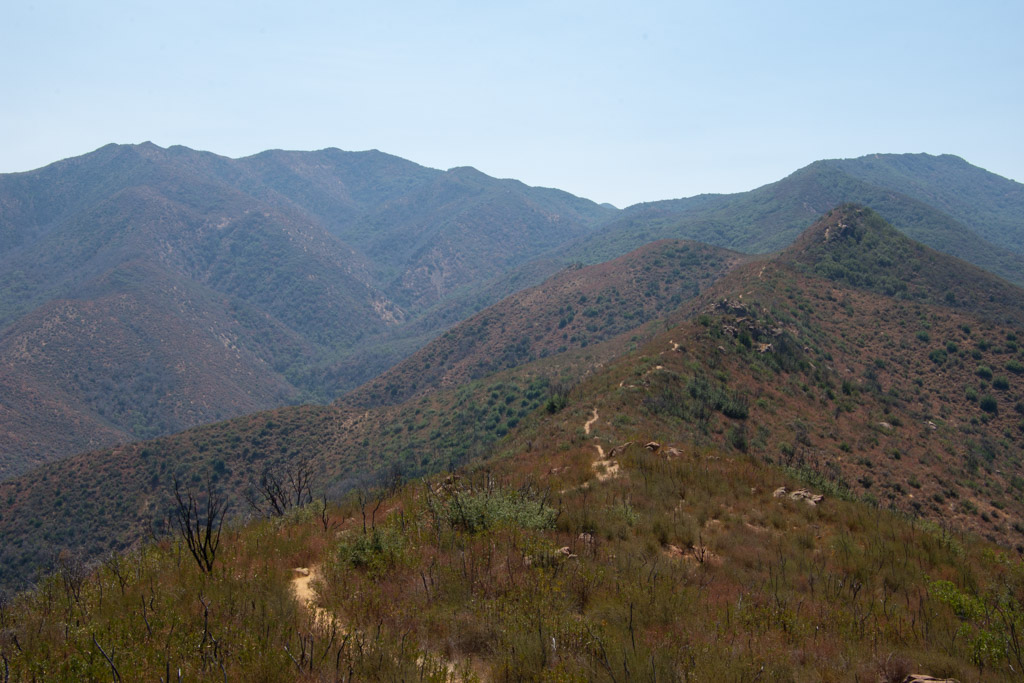 More of the trail. Keep walking.
More of the trail. Keep walking.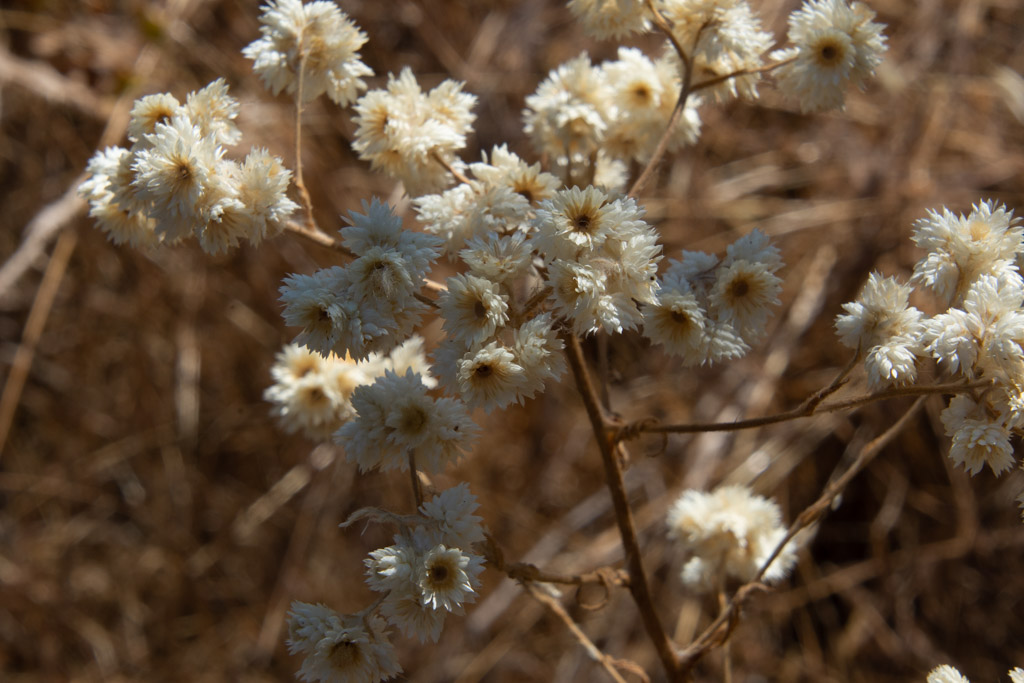 California Cudweed.
California Cudweed.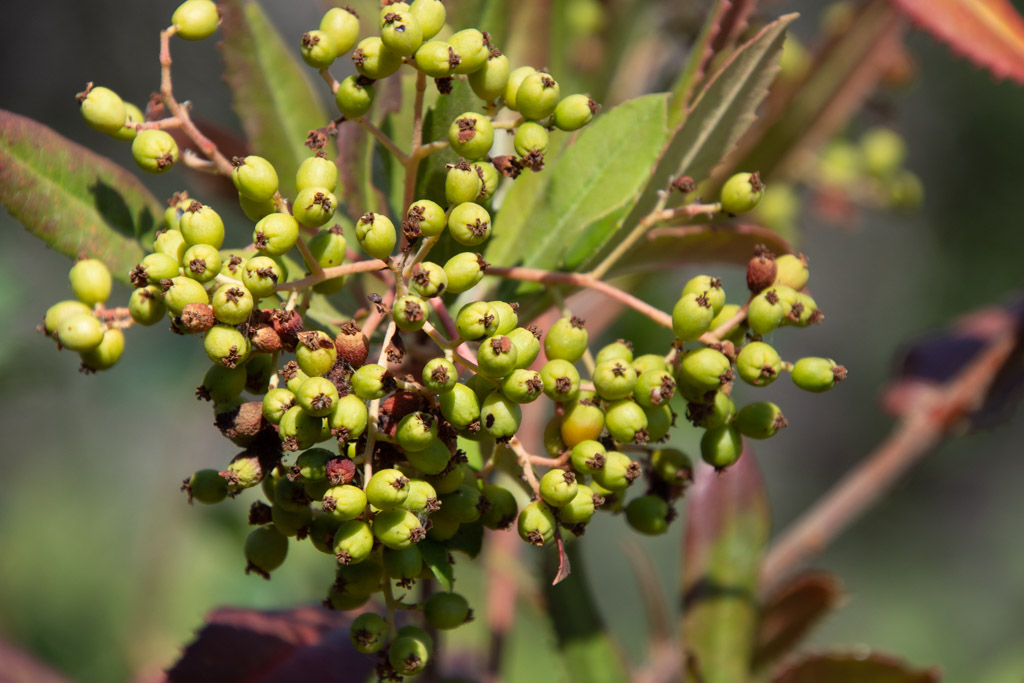 Toyon berries.
Toyon berries.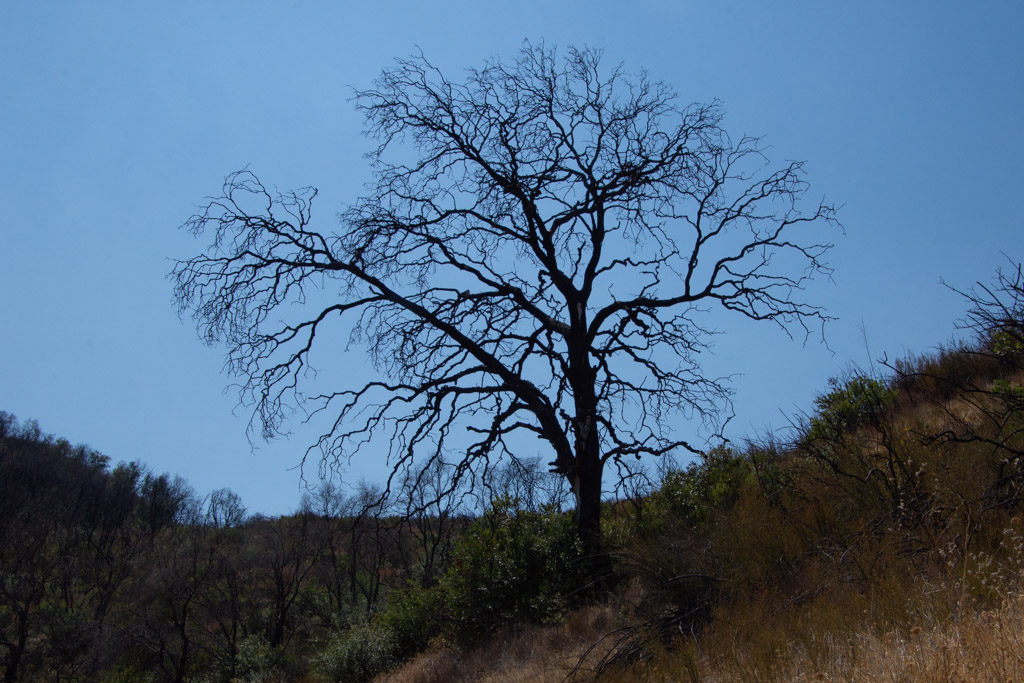 Burned oak.
Burned oak.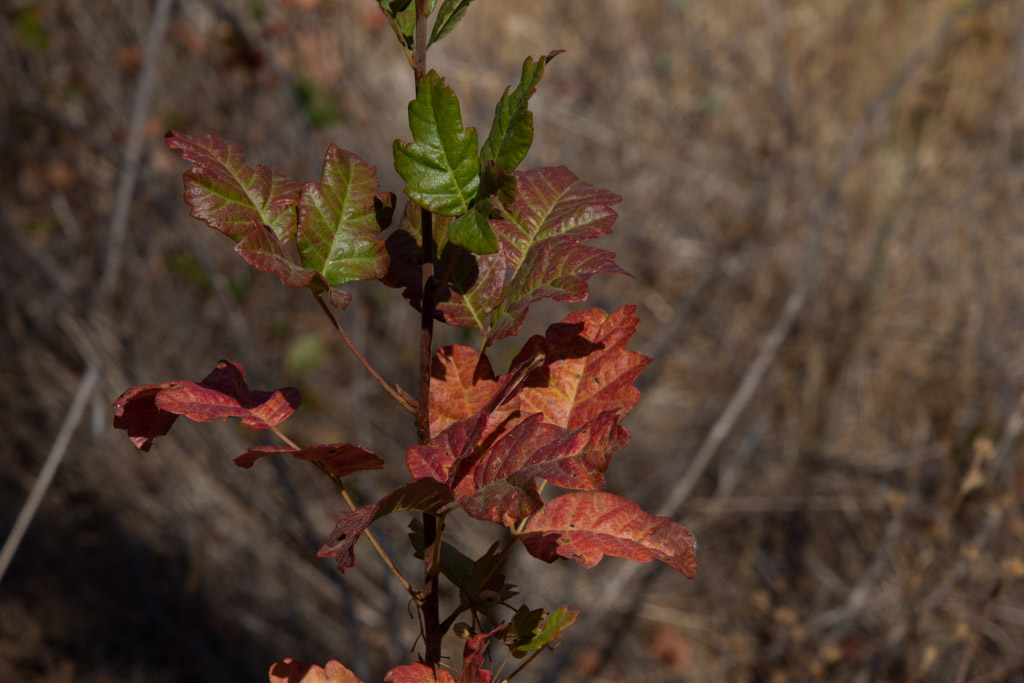 Fall colors (more poison oak).
Fall colors (more poison oak).